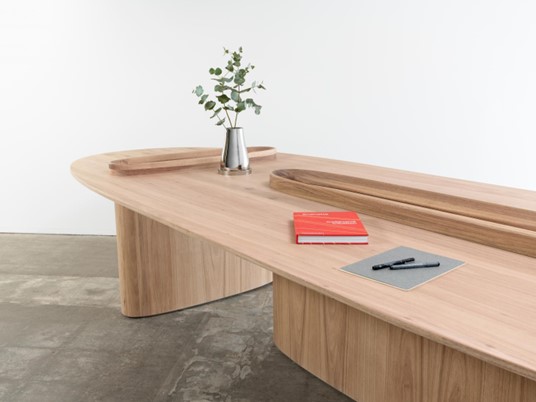Our panel discussion during Dubai Design Week examined how the concept of luxury in residential design in the Middle East is beginning to shift from chandeliers and gilded interiors to sustainable products and spaces that embrace purpose and authenticity.

IS SUSTAINABLE DESIGN THE NEW GOLD STANDARD FOR LUXURY LIVING?
Our panel discussion during Dubai Design Week examined how the concept of luxury in residential design in the Middle East is beginning to shift from chandeliers and gilded interiors to sustainable products and spaces that embrace purpose and authenticity
SUSTAINABILITY IS THE NEW LUXURY
SUSTAINABILITY IS THE NEW LUXURY
Aritco was the proud sponsor of the talks program at The Forum during Dubai Design Week 2022. David Schill, Marketing Director, took part in a panel discussion that explored how sustainability is increasingly becoming an important element in high-end residential design in the region. The talk was moderated by Marina Mrdjen, design journalist and founder of marketing consultancy Intelier, and the two other panelists were interior designers Meshary Al Nassar, and Sawsan Haber, founder of Dipuigi Luxury Interior Design & Architecture.
As pointed out by Aritco’s latest trend report, Rethinking Luxury: Sustainable Materials , produced in collaboration with innovations platform Springwise, in the past two years, global Google searches for “sustainability” and “sustainable luxury brands” rose by 40 percent and 46 percent respectively.
So what are the key drivers for this dramatic shift in high-end consumer demand, how has it affected the design and architecture sector, and has it reached Dubai and the wider region?
SHIFTING DEMOGRAPHICS
According to a recent Henley Global Citizens Report, 4,000 high-net-worth individuals were expected to relocate to the UAE in 2022 following the disruption and restrictions of the Covid-19 pandemic. Many of these millionaires who are making a new home in Dubai are young – they are from the Millennial and Gen Z generations – and they are fueling a boom in the high-end residential market. But this new generation of wealthy consumers is acutely aware of how climate change will affect their future. They are willing to pay a premium for spaces and products that demonstrate sustainable provenance or positive social impact.
Meshary Al Nassar pointed to the rise in demand for organic, natural fabrics and materials and Sawsan Haber commented that the quality of sustainable furniture has evolved rapidly beyond recycled plastic in recent years. David Schill cited the five-meter-long table designed by Norwegian design firm Snøhetta crafted from Tasmanian oaks reclaimed from the sea that appeared in the Springwise trend report.

THE RISE OF SHORT-TERM LETS
According to a recent global Airbnb survey, 88% of their hosts have adopted green practices—59% focus on recycling; 39% give their guests information on public transport; 47% buy toiletries in bulk to reduce packaging. Short-term lets offer authentic experiences to a wide range of travelers of all ages as well as a much smaller carbon footprint than hotels. The region’s answer to Airbnb, bnbme, has its sights set on Saudi Arabia which is opening up rapidly to mass tourism. As the short-let phenomenon increases in popularity across the Middle East, the real estate market and the design sector will need to cater to consumer demand.
The panelists agreed that the market for short-term lets has huge potential for growth and will most likely evolve into two streams – the more pedestrian properties and very high-end, luxurious boltholes. For the latter, sustainable design will be key as furniture and furnishings will need a timeless aesthetic, allowing them to be refurbished and reupholstered over time. As much of the luxury sector has already discovered, for the high-end consumer, sustainability and circularity are becoming just as important as quality.




